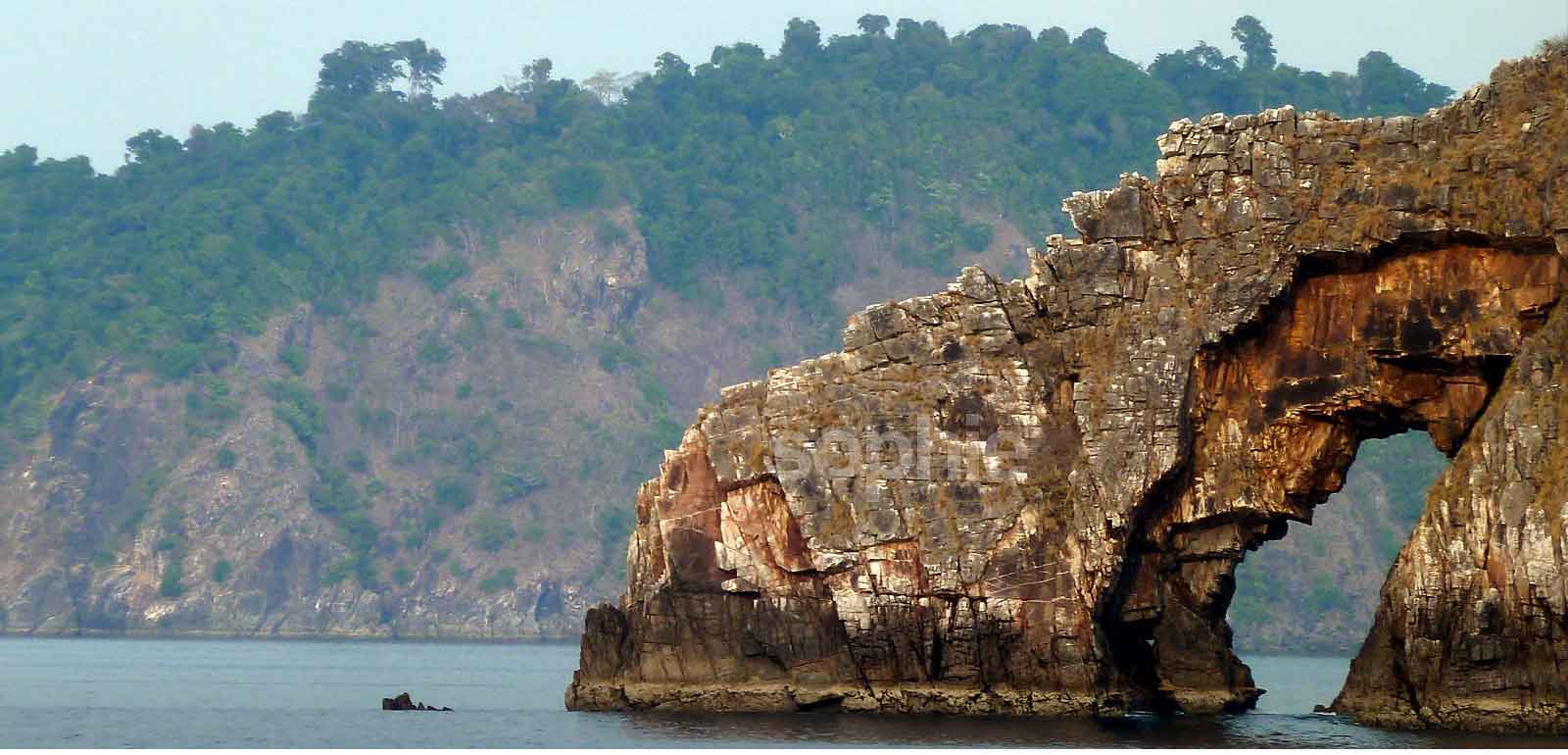Diving in the Mergui Archipelago
Opening up the Mergui Archipelago for diving
The Mergui Archipelago was been closed to foreign tourists since the independence of Myanmar (Burma) from the British Empire in 1948. Since 1997, with ups and downs as the borders sometimes opened and closed for a longer period, few liveaboards started to enter the untouched Mergui Archipelago. Since 2006-2007 borders remained open for licensed boats and we have been diving here since that time.
Great diversity of flora & fauna underwater and above the sea level
The Archipelago's virtual isolation from mankind's influence on the natural environment has given the islands and the surrounding waters of the Andaman Sea a great diversity of flora & fauna, contributing to the region's growing popularity as a hidden remote diving destination.
The unspoiled terrestrial scenery of this high-profile limestone and granite topography, offers lots of nature above and under sea level. Dense brush- and rainforest cover most areas above high-tide line, while vast stretches of magnificent white-sand beaches are interspersed with rocky headlands, tidal creeks, varieties of mangroves, forests, wild life, lagoons, caves, fresh waterfalls and freshwater rivers.
Diving sceneries of the Mergui Archipelago
Underwater this region offers scenic reefs, fantastic topography and profilic fish and invertebate life. There is a good chance of seeing big animals, but also macro divers will love the area. Besides numeous swarms, you will find a tremendous variety of smaller fish and reef creatures, including many unusual species, some of which are only home to the Mergui Archipelago. For example, we have spotted numerous nudibranches wich we never found listed in any fish guide or encyclopedia.
Four types of diving can be found in the Mergui Archipelago
- Inshore fringing island reefs
- Offshore fringing reefs
- Pinnacles and small rocky islands which rise from the depths and attract larger marine life such as sharks and rays
- Banks which rise up from depths of over 300+ meters
The Southern-, Central- and Northern Part of the Archipelago
 Because the Mergui Archipelago covers such a large area, we have basically splitted up this area in the southern-, central- and northern part of the Archipelago:
Because the Mergui Archipelago covers such a large area, we have basically splitted up this area in the southern-, central- and northern part of the Archipelago:
Diving in the Southern Part of the Mergui Archipelago
Once we have passed the border at Ranong in Thailand and Kawthaung in Myanmar (Burma), we will enter the southern part. In this area you'll first see some bigger islands and once we have left these behind us, rocks and small islands mark our route. In the southern area, we dive at dive sites like Western Rocky, Fan Forest Pinnacle and Laguna Wall.
Diving in the Central Part of the Mergui Archipelago
Within the Central Part we visit dive sites like Orange Rock, 3 Sisters and Paradise Rock. There is only a small chance that you will meet other boats or other divers here.
Diving in the Northern Part of the Mergui Archipelago
The Northern Part is the most remote area and covers dive sites like Black Rock. Huge and also tiny rocks that rise up from a deeper depth mark this area. But also we visit within this area the North- and South Twin Islands which have a very different topography from most other islands within the Archipelago. Due to their granite landscapes, the topography of the North- and South Twin Islands are more similar to the Similan Islands in Thailand.



















